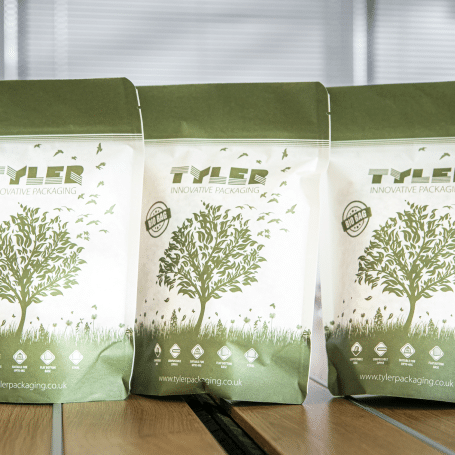What is Compostable Packaging Made Of?
What is compostable packaging & the benefits?
What is compostable packaging & the benefits?
Here we take a closer look at what compostable packaging is and what difference it can make, as well as the different types of compostable packaging available.
We also explain the difference between compostable and biodegradable!

Compostable packaging is made from a variety of recycled and plant-based materials. These usually include natural materials like wood pulp and potato starch. Because these kinds of materials are natural, they make compostable packaging environmentally friendly. Other types of non-compostable packaging often create toxins when they’re disposed of and can damage soil.
It has also been developed into bioplastic, a plant-based plastic packaging alternative that has many of the same characteristics as less sustainable equivalents. This material can be used for things like smoothie cups and fruit juices. Bioplastic is commercially compostable because it is made from renewable sources but is designed to be recycled and reused.
Compostable packaging works because the organic materials it is made from break down into natural elements. This works in much the same way as biodegradable packaging, but the difference is that biodegradable items decompose without having much or any benefit to the environment, whereas compostable packaging can benefit soil quality and the general surrounding environment when it breaks down.
To make sure the cardboard or paper you use for your packaging is as sustainable as possible, you should try to source post-industrial recycled materials. Additionally, anything that is marked as FSC-certified has been sourced from sustainably managed forests and is an even better option.
Put simply, biodegradable and compostable packaging share the same value: they can break down over time.
But when it comes to how they decompose, there are great differences in terms of how quickly they do so and what they leave behind.
When exposed to the right conditions, compostable packaging breaks down into natural elements that promote healthy soil. Around 90% of it is converted back into CO2. It typically decomposes at the same speed as organic matter, which is approximately 3-6 months.
Biodegradable packaging can be plant or oil-based and contain extra microorganisms that break the material down into smaller pieces. Although these materials can decompose, the resulting by-products may contaminate soil and need to be processed in special facilities.
When disposed of in landfill, soil, or the ocean, biodegradable packaging typically decomposes at the same speed as traditional plastic.
At Tyler Packaging, we have worked with businesses to produce packaging that is 100% sustainable and compostable, using renewable materials that naturally break down in a controlled timeframe, returning the materials to nature.
Switching to sustainable packaging is made easy with Tyler Packaging; we’re confident that we can work with you to find the right type of packaging for your product.
Give us a call on 01926 651451 or email us at info@tylerpackaging.co.uk, or order a sample pack to see for yourself.
Want to know more about how our packaging solutions can help your business with its goals? Fill in the form and we’ll get back to you as soon as we can.